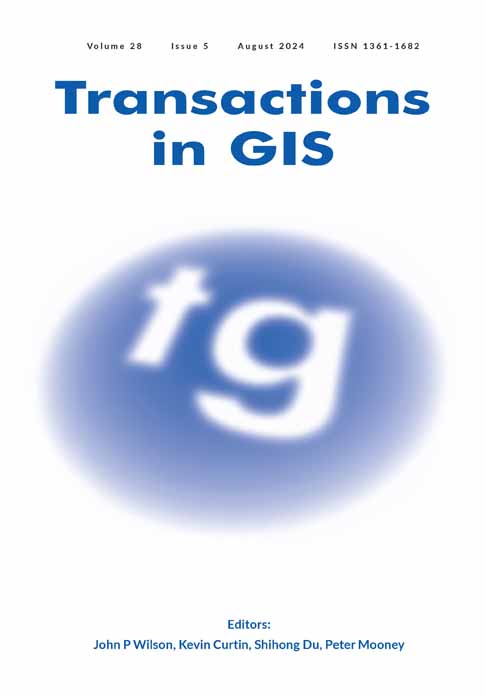GEUKE: A geographic entities uniformly explicit knowledge embedding model
Abstract
Knowledge embedding for geographic knowledge graphs can effectively improve computational efficiency and provide support for knowledge reasoning, knowledge answering and other applications of knowledge graphs. To maintain a more comprehensive understanding of spatial features through knowledge embedding, it is crucial to integrate the representation and computation of various entity types, encompassing points, lines, and polygons. This article proposes a geographic entities uniformly explicit knowledge embedding model (GEUKE). In GEUKE, spatial data of point, line, and polygon-type geographic entities are expressed in the form of subgraphs, and space embedding is generated using a SubGNN-based uniform spatial feature encoder. GEUKE improves the energy function in TransE to train spatial feature-based embedding and structural-based embedding of geographic entities into a unified vector space. Experimental results show that GEUKE has higher performance than TransE, TransH, TransD, and TransE-GDR on link prediction and triple classification task. Within the spatial feature embedding process, GEUKE effectively preserves the inherent features of entities, encompassing location, neighborhood, and structural attributes, while simultaneously ensuring a coherent spatial data representation across all three entity types: points, lines, and polygons. By maintaining the spatial features of geographic entities and their interrelations, this capability unleashes the full potential of applications such as knowledge reasoning and geospatial question answering in a manner that is conducive to diverse geospatial scenarios.
CONFLICT OF INTEREST STATEMENT
The authors declare that there is no conflict of interest.
Open Research
DATA AVAILABILITY STATEMENT
The data that support the findings of this study are available from the corresponding author upon reasonable request.




